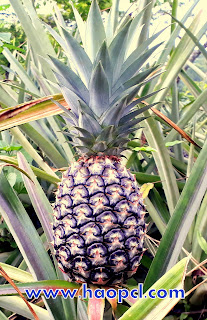Hmar tribe is also called as Mhar or Mar and they are the dwellers of the North Eastern Part of India. They inhabit Meghalaya, Mizoram, Cachar, Chittagong Hill Tracts and Tripura. Hmar Tribe finds their roots from a place called Sinlung which is the ancestral home of Zonhnathlak. It remains still a controversy if they are from Sinlung but eventually left Sinlung which was once a democratic state. They gained recognition as one of the Scheduled Tribes as per the 6th Schedule of Constitution of India. Hmar tribe belonged to the Chin-Kuki Mizo group of tribes & they reside in the northeastern states. In the year 1910 a Welsh Missionary Watkin Roberts introduced the Hmar Tribe of mainly southern region of Manipur to Christianity.
The Hmar Tribe migrated from China and settled first in Burma and scattered in & around Manipur, Mizoram and North Cachar Hills in Assam. Hmars are of Mongoloid stock. Though the Hmar tribal Community is divided into exogamous clans they do not strictly adhere to exogamy. They strictly follow Monogamy. Arranged cum Love-Marriages are preferred. As per the Hmar geneology,
Hmar Tribe tradition is of revering dance forms, festivals, music etc. Their expertise is shown in the Conventional folk dance, folk songs that are nicely represented by scenes of adventure, battle, love, victory and other experiences throughout history. The culture is enriched with amazing tribal songs and dance forms.
 Hmars built their villages on hill -tops & houses are constructed on wooden planks. Slash & burn system of agricultural practices is still at large by the Hmar Tribe.
Hmars built their villages on hill -tops & houses are constructed on wooden planks. Slash & burn system of agricultural practices is still at large by the Hmar Tribe.
In the North-East India, which has a larger proportion of tribal population as compared to India as a whole, there are quite large tribal groups which occupy larger areas. On the other hand, there Are numerous smaller tribal groups in the region. It is possible to divide the tribal groups of the region, on the basis of their size and distributional pattern, into four types.
1) Larger tribal groups occupying large areas (e.g. the Bodos).
2) Large tribal groups occupying relatively smaller areas, (e.g., the Khasis).,'
3) Smaller tribal groups occupying smaller areas (e.g., the different tribes living in Arunachal Pradesh), and
4) Smaller tribal groups distributed over large areas (e.g. the Hmars).
The Hmars fall into the fourth category: they are a small tribal group and are distributed over a large area The Hmar tribe belongs to the Kuki-Chin group and is found scattered very unevenly in many states of the North-East region, especially in Manipur, Mizoram, and in the Cachar and North Cachar Hills districts of Assam. The total population of the Hmar tribe in 1981 was 48,953.
In Cachar, majority of Hmars are living in the Lakhipur constituency, Joypur block Harinagar contiguous to Jinam valley N.C. Hills and some of them are living in Udharbond constituency. Hmarkhawlien village is the biggest Hmar village in Cachar and Muoltluong Diphuchera is the second biggest.
The Hmars are single largest tribes within the jurisdiction of Barak Valley Hill Tribes Development Council.
The Hmar Tribe migrated from China and settled first in Burma and scattered in & around Manipur, Mizoram and North Cachar Hills in Assam. Hmars are of Mongoloid stock. Though the Hmar tribal Community is divided into exogamous clans they do not strictly adhere to exogamy. They strictly follow Monogamy. Arranged cum Love-Marriages are preferred. As per the Hmar geneology,
Hmar Tribe tradition is of revering dance forms, festivals, music etc. Their expertise is shown in the Conventional folk dance, folk songs that are nicely represented by scenes of adventure, battle, love, victory and other experiences throughout history. The culture is enriched with amazing tribal songs and dance forms.
 Hmars built their villages on hill -tops & houses are constructed on wooden planks. Slash & burn system of agricultural practices is still at large by the Hmar Tribe.
Hmars built their villages on hill -tops & houses are constructed on wooden planks. Slash & burn system of agricultural practices is still at large by the Hmar Tribe.In the North-East India, which has a larger proportion of tribal population as compared to India as a whole, there are quite large tribal groups which occupy larger areas. On the other hand, there Are numerous smaller tribal groups in the region. It is possible to divide the tribal groups of the region, on the basis of their size and distributional pattern, into four types.
1) Larger tribal groups occupying large areas (e.g. the Bodos).
2) Large tribal groups occupying relatively smaller areas, (e.g., the Khasis).,'
3) Smaller tribal groups occupying smaller areas (e.g., the different tribes living in Arunachal Pradesh), and
4) Smaller tribal groups distributed over large areas (e.g. the Hmars).
The Hmars fall into the fourth category: they are a small tribal group and are distributed over a large area The Hmar tribe belongs to the Kuki-Chin group and is found scattered very unevenly in many states of the North-East region, especially in Manipur, Mizoram, and in the Cachar and North Cachar Hills districts of Assam. The total population of the Hmar tribe in 1981 was 48,953.
In Cachar, majority of Hmars are living in the Lakhipur constituency, Joypur block Harinagar contiguous to Jinam valley N.C. Hills and some of them are living in Udharbond constituency. Hmarkhawlien village is the biggest Hmar village in Cachar and Muoltluong Diphuchera is the second biggest.
The Hmars are single largest tribes within the jurisdiction of Barak Valley Hill Tribes Development Council.
There are 99 Hmar villages, 5216 houses and 36,684 populations as per the census recorded by the Barak Valley Hill Tribes Development Council in 2007. In Hmarkhawlien village, there are 1000 (one thousand) houses.
Growing pineapple and jhumming cultivation is the main occupation of the Hmars living in Cachar.






